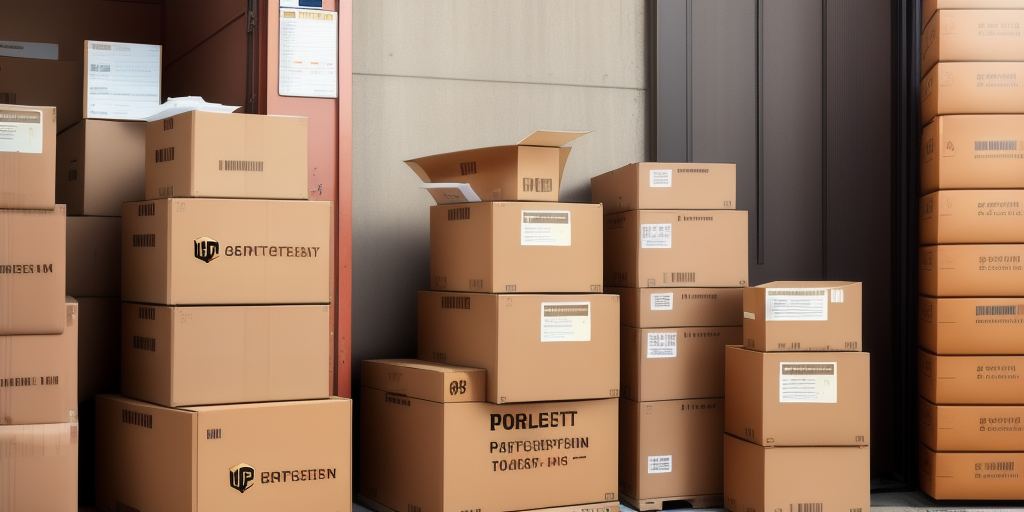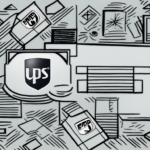Understanding UPS Rates for Shipping: A Comprehensive Guide
Shipping is an essential component of many businesses, enabling the delivery of products to customers both domestically and internationally. Among the myriad of shipping carriers available, United Parcel Service (UPS) stands out as one of the most popular and reliable options. However, navigating UPS’s diverse range of shipping rates can be complex, particularly when striving to identify the most cost-effective solutions for your business needs.
In this comprehensive guide, we will delve into how UPS rates are determined, examine the various shipping options available along with their associated costs, and outline methods for calculating total shipping expenses. Additionally, we will explore potential additional fees and surcharges, and provide actionable tips for negotiating better rates with UPS.
How UPS Rates Are Determined
UPS calculates its shipping rates based on several key factors, each contributing to the overall cost of shipment. Understanding these factors can help businesses make informed decisions to optimize their shipping expenses. The primary determinants include:
- Distance Traveled: The farther the package needs to travel, the higher the shipping cost. UPS utilizes a zone-based pricing system where rates increase with each additional zone crossed during transit.
- Package Weight and Dimensions: Both the weight and size of a package impact the shipping rate. Oversized or heavier packages incur higher fees due to increased handling and transportation costs.
- Level of Service: UPS offers various service levels, such as Ground, Air, and International shipping. Faster delivery options like Next Day Air are more expensive compared to standard Ground services.
- Package Type: Specialized items, including hazardous materials or fragile goods, may require additional handling and incur extra charges.
- Seasonal Demand: During peak seasons, such as the holiday period, shipping rates may increase due to higher demand and logistical challenges.
- Discounts: High-volume shippers and businesses utilizing UPS’s online shipping tools can access discounted rates, reducing overall shipping expenses.
For detailed information on UPS's rate calculation, refer to the official UPS Rate Finder.
Factors That Affect UPS Shipping Rates
Beyond the primary determinants, several additional factors influence UPS shipping rates. Understanding these can further aid in optimizing shipping costs:
- Destination and Origin: Shipping to or from rural or remote areas typically incurs higher costs due to increased transit time and resource allocation.
- Type of Item: Items requiring special handling, such as perishable goods or high-value items, may result in additional fees for insurance and security measures.
- Shipment Timing: Expedited shipping options, while faster, come at a premium price. Conversely, standard shipping options are more economical but take longer to deliver.
- Package Content: Certain contents, like electronics or chemicals, may attract specific surcharges or require compliance with additional regulations.
For more detailed insights, refer to this comprehensive article on UPS shipping rates.
Different Types of UPS Shipping Options and Their Rates
UPS offers a variety of shipping options tailored to meet different business needs and budget constraints. The primary shipping methods include:
- Ground Shipping: An economical choice for domestic shipments, typically delivering within 1-5 business days depending on the destination.
- Express Shipping: Includes services such as Next Day Air, 2nd Day Air, and 3rd Day Select. These options offer faster delivery times at higher costs.
- International Shipping: Services like Worldwide Express, Worldwide Expedited, and Standard cater to global shipping needs, each varying in delivery speed and cost.
- Freight Shipping: Designed for larger or bulk shipments, with rates based on the weight and dimensions of the freight.
In addition to these core services, UPS provides specialized offerings such as UPS My Choice, allowing customers to customize delivery preferences and receive real-time alerts. UPS Access Point locations offer convenient pick-up and drop-off options at local businesses, reducing the need for direct home deliveries.
For a comprehensive overview of all UPS shipping options, visit the UPS Shipping Services page on ShipScience.
How to Choose the Most Cost-Effective UPS Shipping Option for Your Business
Selecting the most cost-effective UPS shipping option requires careful consideration of various factors. Here’s a step-by-step approach to determine the best shipping method for your business:
- Determine Package Weight and Dimensions: Accurately measuring and weighing your packages is crucial, as these are primary factors in rate calculation.
- Identify Destination Zip Code: Knowing the destination helps in understanding zone-based pricing and potential surcharges for rural or remote areas.
- Select Service Level: Decide whether speed or cost is the priority. Standard Ground shipping is more economical, while expedited services cost more but deliver faster.
- Consider Insurance Needs: For high-value items, additional insurance may be necessary, impacting overall shipping costs.
- Assess Volume: High-volume shippers may qualify for discounts, reducing the average shipping cost per package.
Utilizing the UPS shipping options calculator on ShipScience can aid in estimating costs based on the above factors, ensuring informed decision-making.
Tips for Negotiating Better UPS Rates for Your Business
Businesses that frequently ship large volumes with UPS can leverage several strategies to negotiate better rates:
- Leverage Buying Power: Demonstrating consistent shipping volume may provide leverage to negotiate lower rates with UPS representatives.
- Optimize Shipment Data: Providing accurate and consistent shipment data helps in maintaining transparency, which can be beneficial during rate negotiations.
- Explore Loyalty and Volume Discounts: UPS offers discounts based on shipment volumes and customer loyalty. Inquire about available programs that align with your shipping patterns.
- Consider Alternative Shipping Methods: For certain shipments, exploring options like USPS or FedEx may yield cost savings without compromising on delivery requirements.
- Optimize Packaging: Reducing package size and weight through efficient packaging can lead to significant savings on shipping costs.
- Regularly Review Shipping Invoices: Monitoring invoices for accuracy ensures that you are being charged correctly, allowing for the identification and resolution of any discrepancies promptly.
For more strategies, refer to the negotiation tips for better UPS rates on ShipScience.
Understanding the Additional Fees and Surcharges Associated with UPS Shipping
When calculating UPS shipping costs, it's essential to account for additional fees and surcharges that may apply. These additional charges can significantly impact the total cost of shipping. Common fees include:
- Residential Surcharge: Applies to deliveries made to residential addresses instead of commercial ones, varying based on package weight and size.
- Delivery Area Surcharge: Charged for shipments delivered to remote or hard-to-reach areas, covering the extra costs of transportation and handling.
- Fuel Surcharge: Adjusted based on fluctuating fuel prices, this surcharge helps UPS manage the variable cost of fuel over time.
- Handling Fees: Additional fees for special services like liftgate delivery or inside delivery.
- Address Correction Fees: Incurred when the provided shipping address is incorrect or incomplete, necessitating corrections.
For detailed information on UPS fees and surcharges, visit the UPS shipping rates page on ShipScience.
How to Calculate Your Total Shipping Costs with UPS
Calculating total shipping costs with UPS involves several components. Here's a breakdown of the steps involved:
- Measure and Weigh Your Package: Accurate measurements and weight are crucial as they directly influence the base shipping rate.
- Select Shipping Service: Choose the service level that aligns with your delivery timeline and budget, such as Ground, Air, or International services.
- Determine Destination: The origin and destination zip codes determine the zone, impacting the rate.
- Identify Additional Fees: Assess any additional services required, such as insurance, special handling, or delivery to residential areas, and include corresponding fees.
- Apply Applicable Discounts: If your business qualifies for volume or loyalty discounts, apply them to reduce the total cost.
- Use UPS Shipping Calculator: Utilize the UPS online shipping calculator on ShipScience to input all variables and obtain an accurate shipping cost estimate.
For a precise calculation, consider creating a shipping matrix that accounts for all possible variables, allowing for quicker estimation and planning in future shipments.
The Impact of Package Size and Weight on UPS Shipping Rates
Package size and weight are two of the most significant factors affecting UPS shipping rates. Here's how they influence costs:
- Dimensional Weight: UPS uses dimensional (DIM) weight pricing for large but lightweight packages, ensuring that oversized items are priced fairly. The DIM weight is calculated as (Length x Width x Height)/139.
- Actual Weight: For heavier packages, the actual weight takes precedence over dimensional weight in rate calculations. Heavier packages incur higher shipping costs.
- Package Dimensions: Larger packages require more space in transit vehicles and may involve increased handling costs, leading to higher rates.
To optimize shipping costs related to size and weight, consider the following strategies:
- Optimize Packaging: Use appropriately sized packaging to minimize dimensional weight without compromising item safety.
- Consolidate Shipments: Combining multiple items into a single shipment can reduce the number of packages and associated costs.
- Choose Suitable Service Levels: Selecting the right service level based on package size and weight can help manage costs effectively.
For more information on dimensional weight pricing, refer to the UPS Dimensional Weight Guidelines on ShipScience.
Using Technology to Streamline Your UPS Shipping Process and Save Money on Rates
Leveraging technology can significantly enhance your UPS shipping process, leading to cost savings and increased efficiency. Key technological tools and solutions include:
- UPS My Choice: This service allows customers to manage deliveries by rerouting packages, selecting specific delivery dates and locations, and receiving real-time tracking updates.
- Online Label Printing: Printing shipping labels online reduces costs associated with traditional label printing methods and saves time.
- Mobile Applications: The UPS Mobile app enables users to track packages, locate UPS facilities, and estimate shipping costs on the go.
- Automated Shipping Software: Integrating shipping software with your order management system can automate label creation, address verification, and rate selection, minimizing manual errors and reducing processing time.
- API Integration: UPS APIs allow businesses to integrate shipping functionalities directly into their websites or applications, streamlining the shipping process and enhancing customer experience.
By adopting these technological solutions, businesses can not only streamline their shipping processes but also identify opportunities to reduce costs and improve overall operational efficiency.
In conclusion, shipping with UPS offers a range of services tailored to diverse business needs. Understanding how UPS rates are determined, exploring various shipping options, accounting for additional fees, and utilizing technology can collectively simplify the shipping process and lead to significant cost savings. This comprehensive guide equips businesses with the knowledge required to make informed shipping decisions, ensuring timely and cost-effective deliveries.
Furthermore, UPS provides a suite of mobile applications that facilitate efficient shipment management on the go. These tools empower businesses to track packages, find UPS locations, and estimate shipping costs from anywhere, enhancing flexibility and control over shipping operations.




















